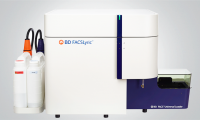-
AZ, Merck link to develop and commercialise cancer drugs
- Source: pharmatimes
- 488
- July 31, 2017
-
Medtronic launches new MRI cardiac therapy defibrillators
- Source: Medicaldevices-network.com
- 509
- July 31, 2017
-
Takeda and BioSurfaces to develop new medical devices for GI indications
- Source: Medicaldevice-network
- 421
- July 28, 2017
-
Sensus gets Chinese regulatory approval for keloid device
- Source: Medicaldevice-network
- 447
- July 28, 2017
-
ViiV’s long-acting two-drug HIV regimen hits targets
- Source: Medicaldevice-network
- 508
- July 27, 2017
-
SLU begins trial for device to treat postpartum haemorrhage
- Source: Medicaldevice-network.com
- 506
- July 27, 2017
-
A Medical Market of 1.3 Billion People
- Source: drugdu
- 886
- July 26, 2017
your submission has already been received.
OK
Subscribe
Please enter a valid Email address!
Submit
The most relevant industry news & insight will be sent to you every two weeks.













